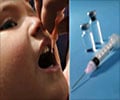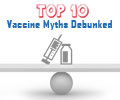Using the Vaccine Safety Datalink (VSD), in a study investigators analyzed four years of data and determined that background mortality rates (rates of death irrespective of cause) are crucial in interpreting the numbers of deaths following vaccination.

Public concern about deaths and other adverse events following immunization can disrupt immunization programs and lead to an increase in vaccine-preventable disease.
"Determining the baseline mortality rate in a vaccinated population is necessary to be able to identify any unusual increases in deaths following vaccine administration," says lead investigator Natalie L. McCarthy, MPH, an epidemiologist at the Centers for Disease Control and Prevention (CDC). VSD mortality rates demonstrate a healthy vaccinee effect where rates were lowest in the days immediately following vaccination, most apparent in the older age groups. The healthy vaccinee effect suggests an avoidance or delay of vaccination when an individual is sick, leading to lower background rates of illness or mortality immediately following vaccination.
"Although there is currently no evidence to support a causal relationship between vaccinations and death, this study provides background mortality rates following vaccination to be used as a baseline when examining the safety profiles of new vaccines and during mass immunization campaigns," adds McCarthy.
Investigators from the Centers for Disease Control and Prevention (CDC) and ten healthcare organizations (sites) that conduct vaccine safety research and surveillance, report on background mortality rates, describe causes of death following vaccination, and examine mortality rates by age, gender, and number of days following vaccination using data recorded in the Vaccine Safety Datalink (VSD).
The VSD is a collaborative project between the CDC and these sites and captures comprehensive medical and immunization histories for over ten million people annually, or approximately three percent of the US population. It uses administrative and other sources at each site to gather data on enrollee demographics, vaccination, and medical outcomes, including mortality. The VSD conducts planned immunization safety studies following the introduction of new vaccines or changes in the immunization schedule, as well as timely investigations of hypotheses that arise from review of medical literature, clinical case reports, or reports from the Vaccine Adverse Event Reporting System (VAERS), a national passive adverse-event reporting system.
Advertisement
Among 13,033,274 vaccinated people, 15,455 deaths occurred within 60 days following vaccination. The rates were highest in people of age 85 years and older, and increased over the period following vaccination. Eleven of the 15 leading causes of death in the VSD and NCHS overlap in both systems, and the top four causes of death were the same in both systems.
Advertisement
Source-Eurekalert










